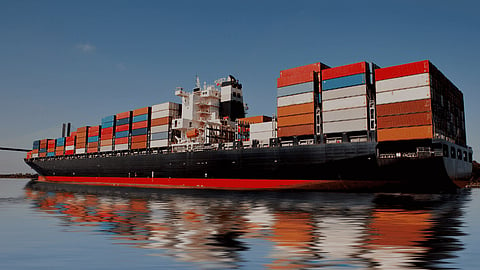Xeneta Reveals Container Shipping’s First Emission Heroes and Villains
Xeneta has taken the first step in a campaign to identify the carrier industry’s best and worst environmental performers across the world’s 13 leading shipping trades.
With the help of the Carbon Emissions Index (CEI), a unique tool from Xeneta and Marine Benchmark, carriers have been assessed on the main Far East to South America East Coast container corridor. The analysis makes uncomfortable reading for industry giant Evergreen.
Proof of performance
In an age of ever-greater environmental scrutiny, the CEI aims to provide global shippers with the data they need to make informed “green shipping” decisions for their cargoes.
Built on the foundation of real-time AIS data and individual vessel specifications, the index covers the main routes for liners, tracking movements and calculating emission footprints.
Xeneta will now be announcing the industry’s “heroes and villains” for each trade in the weeks and months to come.
According to this latest analysis, the CO2 emitted per tonne of cargo from the Far East to the East Coast of South America rose by 6.3% (quarter-on-quarter) in Q4 2022.
Xeneta Forecasts Falls in Freight Rates, Volumes and Demand
This leaves the trade with a CEI of 96.6, its highest tally since Q3 2021 and the highest CEI of all the five major corridors out of the Far East.
Stakeholders take note
The scores of individual carriers, reveals Peter Sand, Xeneta Chief Analyst, were “very mixed” with clear winners and others, he says, “that would benefit from doubling down on their efforts.”
He comments: “Environmental performance has never been more important, both from a ‘green’ and a commercial perspective, with shippers, regulators, financiers and other stakeholders paying close attention.
"With that in mind, Hamburg Süd will be very happy to record the lowest CEI on the trade, registering 76.2. This means a tonne of cargo sailing on a ship operated by Hamburg Süd emitted over 20% less CO2 than an average tonne on this trade. A great result.”
Evergreen wilts
The low score, Sand explains, is due to Hamburg Süd’s sailing of “relatively slow steaming”, larger-than-average ships on this trade. Amongst other “star performers” were ONE, scoring 82.2, and Hapag Lloyd, registering 84.3.
Looking at historical figures, Hapag Lloyd actually emerges as the most carbon-efficient carrier on this trade in the past five years.
“Unfortunately for them, the CEI data shows that Evergreen was the worst performer amongst the top six carriers over the quarter,” Sand notes, adding that the Taiwanese group logged a score of 109.7.
“Somewhat counterintuitively, Evergreen actually had the highest filling factor on the trade – whereas Hamburg Süd’s was lower than average – however, its smaller, less carbon efficient vessels took a toll on the overall score. In addition, their ships sailed much faster, with speeds of 8.9% above the trade lane average.”
Added value
Interestingly, comparing the CEI with Xeneta’s wealth of crowd-sourced ocean freight rates data shows that green performance doesn’t necessarily come with a premium price tag.
Looking at Q4 2022, Hapag Lloyd’s average rates were lower than average on the spot market, while on the long-term contract market, Hamburg Süd charged less than the market average when considering all valid long-term contracts.
Evergreen, on the other hand, was more expensive on the long-term market but offered savings on the spot market compared to the industry average.
CEI data, which is trusted, verified and independent from carriers, covers 13 of the world’s biggest trades. More lanes will be added by Xeneta and Marine Benchmark in the coming months.


